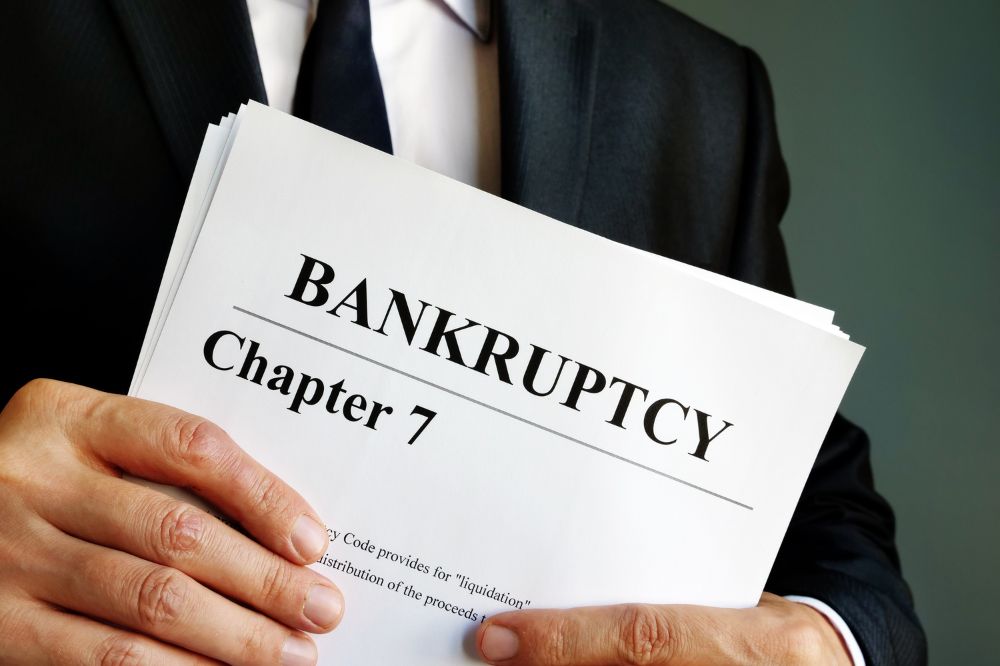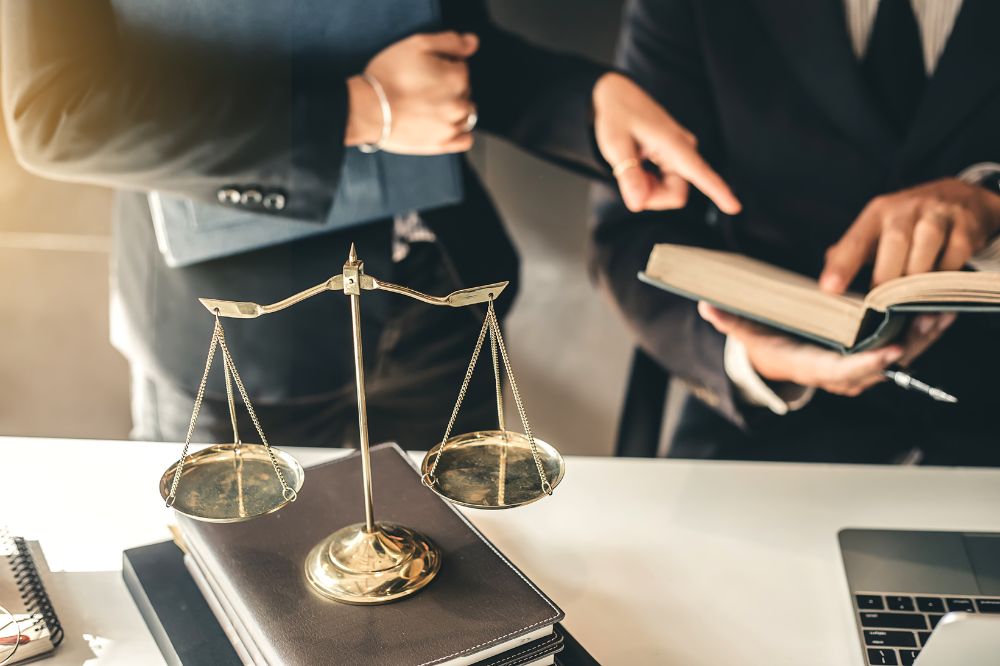Navigating insolvency and bankruptcy procedure for sole proprietorships and partnerships can be a daunting challenge. Understanding the historical context of insolvency laws, bankruptcy procedure, financial affairs, and security interest is crucial in today’s business landscape. With the rise and fall of businesses over time, insolvency regulations have evolved to protect both debtors and creditors, bankruptcy procedure, financial affairs, payments, and equity security holders. Delving into the intricacies of insolvency for sole proprietorships and partnerships sheds light on the legal frameworks that govern these entities’ financial struggles. By grasping the historical foundations, businesses can better comprehend their rights and obligations when facing insolvency.
Key Takeaways
- Understanding Insolvency: Recognize the signs of financial distress early to take proactive measures.
- Personal Liability Explained: Comprehend the potential personal repercussions of business debts for sole proprietors and partners.
- Bankruptcy Options: Explore bankruptcy as a viable solution when facing overwhelming debts.
- Legal Assistance Importance: Seek professional legal guidance to navigate complex insolvency proceedings effectively.
- Protecting Personal Assets: Implement strategies to safeguard personal assets from business creditors in case of insolvency.
- Planning for the Future: Develop a solid financial plan to prevent insolvency and secure the longevity of your business.
Understanding Insolvency
Basic Definitions
Insolvency for sole proprietorships and partnerships refers to the inability to pay debts when they are due. It signifies financial distress that can lead to legal actions if not resolved promptly, causing possession of business assets and missed payments. The difference between insolvency and bankruptcy lies in the legal status: insolvency is a financial state, while bankruptcy is a legal process.
Legal implications of insolvency include potential lawsuits, loss of personal assets, and damage to credit scores. It can cause business closure if debts remain unpaid, impacting future financial opportunities.
Sole Proprietorship Risks
e proprietors face unique risks in insolvency, as their personal assets are directly tied to the business. This means personal savings, homes, or vehicles could be used to settle business debts. Insolvency can have a profound impact on the owner’s personal finances, leading to long-term consequences such as damaged credit.
- Personal assets at risk
- Impact on personal finances
Partnership Challenges
Partnerships encounter distinct challenges during insolvency proceedings. Dividing assets and liabilities among partners becomes complex, potentially leading to disagreements and disputes. The strain on relationships among partners can be significant, as financial stress often amplifies existing tensions within the partnership.
- Dividing assets and liabilities
- Strain on partner relationships
Personal Entanglement in Business
Asset Liability
Asset liability refers to the obligations and debts a business entity has in relation to its assets. In the context of insolvency for sole proprietorships and partnerships, business assets and possession play a crucial role. When a business becomes insolvent, its assets are used in order to settle outstanding debts. Managing asset liability effectively is essential to ensure a fair distribution of assets among creditors during insolvency proceedings.
During insolvency, understanding the concept of asset liability helps in determining which assets can be used to repay debts. Strategies such as identifying exempt assets that are protected from liquidation can help protect certain personal or essential assets from being seized during insolvency. By strategically managing asset liability, individuals can navigate through insolvency proceedings more effectively.
Credit Impact
The impact of insolvency on the creditworthiness of sole proprietors and partnerships is significant. Insolvency can severely damage an individual’s credit score, making it challenging to secure loans or credit in the future. Creditors may view individuals who have experienced insolvency as high-risk borrowers, leading to higher interest rates or loan denials.
Rebuilding credit after experiencing insolvency requires time and effort. Individuals can start by reviewing their credit report regularly to identify any errors or discrepancies that may be affecting their score negatively. Making timely payments on any remaining debts and establishing a positive payment history can gradually improve one’s creditworthiness over time.
Facing Business Debts
Debt Management
Effective debt management is crucial for sole proprietors and partnerships facing insolvency. Prioritize debts based on urgency, such as taxes or employee wages. Implement a strict budget to control expenses and focus on settling outstanding debts promptly.
Negotiation plays a pivotal role in debt management during insolvency. Engage in open communication with creditors to explore repayment options. Seek professional guidance to navigate complex debt restructuring processes effectively. Consider debt consolidation as a viable solution to streamline payments.
Prioritizing debts is essential when managing business debts during insolvency. Focus on high-priority obligations like secured loans or tax arrears first. Create a repayment plan that allocates resources efficiently to address outstanding debts promptly. Stay proactive in seeking solutions to avoid legal repercussions.

Negotiating with Creditors
When negotiating with creditors during insolvency, employ effective tactics to reach favorable agreements. Present a detailed financial overview to creditors, demonstrating transparency and commitment towards resolving debts. Explore alternative payment arrangements, such as installment plans or lump-sum settlements.
Reaching settlements with creditors offers various benefits for sole proprietors and partnerships facing insolvency. It can lead to reduced debt amounts, extended payment deadlines, or even partial forgiveness of debts. Collaborate with creditors to find mutually beneficial solutions that alleviate financial strain.
Communication is key when engaging in negotiations with creditors during insolvency proceedings. Maintain regular contact with creditors to provide updates on the business’s financial status and progress towards debt resolution. Address concerns promptly and professionally to foster trust and cooperation in the negotiation process.
Personal Liability Explained
Legal Implications
Bankruptcy laws play a crucial role in governing insolvency proceedings for sole proprietorships and partnerships. In the event of insolvency, personal liability can extend to the owners and partners. This means that their personal assets may be used to settle business debts.
During insolvency, legal challenges such as creditor disputes or disagreements over asset distribution can arise. These challenges can prolong the insolvency process and lead to further financial strain on the business owners.
Financial Consequences
Insolvency for sole proprietors and partnerships can have severe financial repercussions, impacting both the business and personal finances of the owners. The inability to pay off debts can result in liquidation of assets, including personal belongings.
The long-term effects of insolvency can significantly affect the financial stability of individuals involved. It may lead to damaged credit scores, making it challenging to secure loans or credit in the future. The stigma associated with bankruptcy can hinder future business endeavors.
Bankruptcy Options
Chapter 7 Bankruptcy
Chapter 7 bankruptcy offers a fresh start by liquidating assets to pay off debts efficiently. This process involves a trustee selling non-exempt assets to settle outstanding liabilities. For sole proprietors and partnerships, Chapter 7 can lead to the discharge of most debts, providing relief from overwhelming financial burdens.
The implications of Chapter 7 bankruptcy are significant. It allows businesses to cease operations while resolving debt issues. Through this procedure, individuals and partnerships can eliminate unsecured debts like credit card balances or medical bills swiftly. However, it’s crucial to note that certain debts such as tax obligations may not be dischargeable under Chapter 7.
In Chapter 7 bankruptcy, the liquidation of assets plays a vital role in debt repayment. The trustee oversees the sale of non-exempt assets to distribute funds among creditors fairly. This process ensures that creditors receive a portion of what they are owed based on priority levels set by bankruptcy laws.
Eligibility criteria for filing Chapter 7 bankruptcy include passing the means test, which evaluates an individual or partnership’s income level compared to the state median. If the income falls below this threshold, they are typically eligible for Chapter 7. Applicants must undergo credit counseling within six months before filing for bankruptcy.

Chapter 13 Bankruptcy
Chapter 13 bankruptcy provides a structured approach for sole proprietors and partnerships to reorganize their debts. Unlike Chapter 7, this option allows businesses to retain their assets while creating a manageable repayment plan over three to five years.
The restructuring of debts in Chapter 13 bankruptcy involves consolidating outstanding payments into a single monthly installment. This arrangement enables individuals and partnerships to catch up on overdue amounts gradually without facing immediate liquidation of assets.
One significant benefit of Chapter 13 bankruptcy is the opportunity for businesses to keep their operations running while repaying debts systematically. By adhering to the court-approved repayment plan, sole proprietors and partnerships can protect their assets from seizure and maintain business continuity.
Choosing the Right Path
Professional Advice
Seeking professional advice is crucial when facing insolvency as a sole proprietorship or partnership. Financial advisors and attorneys play key roles in guiding individuals through the complexities of insolvency proceedings. Their expertise helps in understanding the legal implications and financial consequences of each decision.
Expert guidance from professionals enables individuals to make well-informed decisions regarding their financial future. Financial advisors provide insights into restructuring options, while attorneys offer legal counsel during insolvency proceedings. Their combined efforts ensure that the best course of action is chosen based on the unique circumstances of each case.
It is essential to acknowledge the benefits of professional advice in navigating insolvency. These experts can help mitigate risks, negotiate with creditors, and ensure compliance with relevant laws and regulations. By consulting with professionals, individuals can approach insolvency with confidence and clarity.
Decision Factors
When deciding between bankruptcy options, several key factors come into play. Personal circumstances, such as assets, liabilities, and income levels, significantly impact the choice between bankruptcy paths. Understanding how these factors influence the outcome of insolvency proceedings is crucial for making informed decisions.
Personal considerations, such as long-term financial goals and family obligations, should also be factored into the decision-making process. Balancing these factors against the potential benefits and drawbacks of each bankruptcy option is essential for achieving a favorable outcome. Individuals must carefully evaluate their situation before electing a specific insolvency path.
Weighing the pros and cons of each decision is vital in determining the most suitable bankruptcy option. Prospective outcomes, such as debt relief, asset protection, and credit implications, should be carefully assessed against potential drawbacks like loss of control over assets or restrictions on future financial activities. Making a well-thought-out decision requires a comprehensive analysis of all available options.
Legal Assistance Importance
Finding a Lawyer
Finding a lawyer experienced in insolvency cases is crucial for sole proprietors and partnerships. Look for attorneys specializing in bankruptcy law.
Consider the lawyer’s track record, experience, and success rate in handling insolvency cases. Ensure they have expertise in relevant legal areas.
Having legal representation during insolvency provides protection and guidance throughout the complex process. Lawyers navigate legal complexities and advocate for their clients’ best interests.
Legal Process Overview
The legal processes in insolvency involve various steps for sole proprietors and partnerships. It starts with filing necessary documents with the court.
From initial filing, the process progresses through negotiations, asset evaluations, creditor meetings, and potential restructuring efforts.
Key milestones include court hearings, approval of proposed plans, liquidation of assets if needed, and final resolution of debts.
Protecting Personal Assets
Asset Separation Strategies
Separating personal assets from business ones is vital during insolvency to safeguard against potential losses. Proper asset documentation and valuation play crucial roles in this process. Ensuring clear distinctions between personal and business assets can protect personal wealth.
To protect personal assets during insolvency, consider strategies like maintaining separate bank accounts for business and personal finances. Clearly delineate ownership of assets through proper documentation to avoid any confusion. Regularly reviewing asset valuations can help in understanding the true worth of personal possessions.
Consider seeking professional advice on the legal implications of asset separation. Engage with financial advisors or legal experts to ensure compliance with regulations. Implementing a comprehensive asset protection plan can provide a layer of security during challenging times.
Legal Tools
e proprietors and partnerships facing insolvency have access to various legal tools to navigate the complexities of the situation. Debt restructuring serves as a common mechanism for managing liabilities and negotiating repayment terms. Settlement agreements allow for resolving debts outside of court proceedings, offering flexibility in addressing financial obligations.
Legal tools such as debt restructuring can assist in renegotiating payment schedules with creditors, providing relief for cash flow constraints. Settlements enable parties to reach mutually acceptable terms, avoiding lengthy litigation processes. Leveraging these legal mechanisms can offer viable solutions for resolving financial distress effectively.
Engaging legal professionals specializing in insolvency law can provide valuable insights into available options. Understanding the implications of each legal tool is essential for making informed decisions regarding debt management strategies. Legal assistance plays a pivotal role in protecting equity security holders‘ interests and ensuring equitable outcomes for all involved parties.
Planning for the Future
Business Restructuring
Business restructuring involves strategic changes to improve financial health and avoid insolvency. By reorganizing operations, businesses can enhance efficiency and profitability. Implementing cost-cutting measures and renegotiating contracts are common strategies.
To ensure long-term viability, companies may need to diversify revenue streams and explore new markets. Successful business restructuring efforts often involve seeking input from financial advisors and legal experts. For instance, a struggling retail company might decide to focus on e-commerce to adapt to changing consumer preferences.
Financial Planning
Financial planning plays a crucial role in preventing insolvency by promoting responsible money management. Budgeting helps track expenses, identify areas for cost-saving, and allocate resources effectively. Cash flow management ensures that the business has enough liquidity to cover operational costs.
Creating a financial plan involves setting clear goals, such as reducing debt or increasing savings. Regularly reviewing financial statements and adjusting strategies accordingly is essential for maintaining financial stability. By forecasting potential challenges, businesses can proactively address issues before they escalate.
Summary
Now that you have a clearer picture of insolvency for sole proprietorships and partnerships, it’s crucial to grasp the personal implications intertwined with business debts. Understanding your options and the potential consequences can guide you towards the right path. Seeking legal advice is not just an option; it’s a necessity to safeguard your personal assets and plan for a more secure future.
Take charge of your financial well-being by making informed decisions today. Don’t hesitate to consult with professionals who can provide tailored guidance based on your unique circumstances. Remember, proactive measures now can prevent significant setbacks later on.
Frequently Asked Questions
What is insolvency and how does it affect sole proprietorships and partnerships?
Insolvency refers to the inability to pay debts when they are due. For sole proprietorships and partnerships, insolvency can lead to personal liability for business debts, putting personal assets at risk.
How can personal assets be protected in case of insolvency for sole proprietorships and partnerships?
To protect personal assets during insolvency, consider options like restructuring debt, negotiating with creditors, or filing for bankruptcy if necessary. Seeking legal advice early on can help safeguard personal belongings from being seized.
Is bankruptcy the only option for dealing with business debts as a sole proprietorship or partnership?
Bankruptcy is not the only solution for managing business debts. Alternatives like debt negotiation, debt settlement, or restructuring may be viable options depending on the financial situation. Consulting with a legal professional can help explore the best course of action.
What role does personal liability play in insolvency cases involving sole proprietorships and partnerships?
Personal liability means that business owners are personally responsible for business debts in cases of insolvency. This could result in creditors pursuing personal assets to settle outstanding obligations. Understanding personal liability is crucial when facing financial difficulties.
How important is it to seek legal assistance when dealing with insolvency as a sole proprietorship or partnership?
Seeking legal assistance is crucial when navigating insolvency issues as a sole proprietorship or partnership. A legal expert can provide guidance on available options, protect your rights, and help you make informed decisions regarding debt management and potential bankruptcy proceedings.




